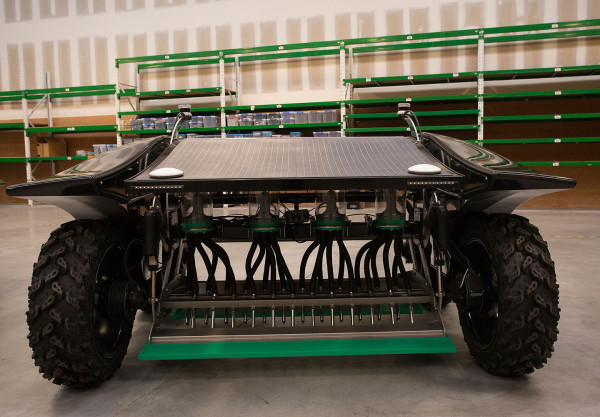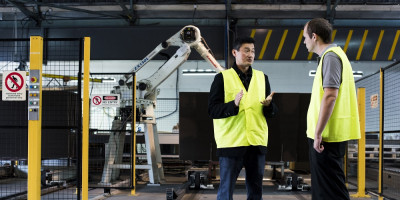Greentech Robotics has done away with manual weeding thanks to their fully autonomous robotic weeder. With Callaghan Innovation support the business rode out the pandemic and accelerated its R&D.
At a glance
- Agritech business Greentech Robotics has developed a fully autonomous robotic weeder. The WeedSpider quickly and accurately removes weeds from commercial vegetable fields, helping offset labour costs and scarcity issues in the process.
- Callaghan Innovation supported Greentech Robotics with its R&D, especially through the pandemic, our R&D Experience Grants as well providing extra staff through student placements.
- An exciting offshore opportunity, Greentech is looking to take on the Californian market first, before heading to other large US vegetable growing states as well as Europe.
Callaghan Innovation have been invaluable to Greentech. It’s made all the difference to our ability to develop the project quicker, faster, and have more staff on board.
- Don Sandbrook, CEO, Greentech Robotics
Tackling a prickly problem
Weeds are the bane of any gardener’s life. But imagine the headache caused for commercial vegetable growers in California, whose average plot size is around 3,000 acres and where most weeds are having to be removed by hand.
It’s a headache that technology entrepreneur Don Sandbrook wanted to tackle, the seed sown for developing the WeedSpider, a fully autonomous robotic weeder.
And while some businesses already have weed extraction technology, the products only extract around 55 per cent of the problem plants. Sandbrook and fellow Greentech Robotics founders, Rob Baan and Malcom Bailey, wanted that number to be 45 per cent higher, albeit appreciating the trickiness around removing them autonomously given they grow right up close to the crops.
“To develop a product that will actually take over that task from a human is an incredible challenge. We’re trying to develop a machine that will identify every plant, and decide which plants need to stay and which will be extinguished. To develop technology to do that effectively, and at speed, is a bit like a new space race, but on land,” Sandbrook says.

Greentech Robotics Seedspider
Supporting Greentech Robotics all the way to the US
Although based in Palmerston North, Greentech Robotics wanted to target the large Californian market first, initially looking to develop the WeedSpider specifically for the area given its unique soil and climatic conditions.
However, to gather that data necessary to finetune the WeedSpider’s machine learning software, the technology needed to be trialled in the US. COVID-19 had a different idea but with Callaghan Innovation support, Greentech Robotics was able to see through the pandemic.
“There’s a lot of data we haven’t been able to gather yet, which is going to hold us up, but we’ve been concentrating on other areas of R&D. It [the pandemic disruption] teaches you to be nimble and flexible,” Baan says. “The situation would have been much harder without Callaghan Innovation support. That assistance has been invaluable.”
The business has also accessed other Callaghan Innovation R&D funding, as well as several R&D Experience Grants, with Shane Dooley, Callaghan Innovation Business Innovation Advisor, noting that the business provides “an excellent environment for students to thrive and learn in”.
Manual labour no more
Dooley says the scale of the market for the technology and the acuteness of the problem means Greentech Robotics is chasing an exciting opportunity.
“That level of export insight for an early-stage New Zealand-based agritech company is rare; we regularly see tech developed for a problem in New Zealand then its developers will look overseas for a market. In this scenario, there’s hardly a New Zealand market, but the business is using its innovation skills to solve a global problem it knows well,” Dooley says.
Greentech Robotics hopes to have the weeding machines working on the ground in California at the end of 2021. Once established there, the plan is to pursue the second and third-largest vegetable growing areas in the US – Arizona and Florida – before targeting Europe.
But that’s just the beginning.
“The automation of manual functions and collection of valuable data in the horticulture and agriculture sectors is going to be a huge industry and we want to be at the forefront of this,” says Baan. “The sector is ready for businesses like ours to make a massive difference to productivity and yields.”




















